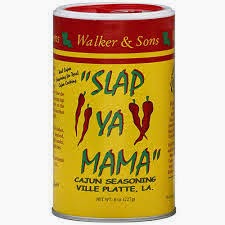Both of the designs that I will feature in this post are from Ribbon Candy Quilts. Although I like to take advantage of the opportunity to develop new and different skills, I liked both of these patterns so much that I signed up for both classes. I really liked the idea of completing the Alaskan Sampler quilt as a souvenir from the cruise that told the story of the places we visited. The Wilderness Skinnie featuring the bear is just too cute to pass up.
The basic techniques are pretty much the same: trace, cut, fuse, apply decorative stitching either by hand or by machine. To be honest, the process can get pretty tedious especially when tracing, cutting, fusing, and then stitching very small pieces. Here's a look at some of my efforts in creating the Wilderness Skinnie. Take note of the wonderful batik prints that were used in this project. Also, note the odd-shaped pieces.
Fortunately, the pieces look much better when organized and fused down to the background. The pattern for this project is available online.
The project looks even better with the decorative stitching. Yes, I really did stitch around each of the individual flowers. I am looking forward to getting it back from the quilter.
I was absolutely thrilled to be able to take the Alaskan Sampler class even though it meant two class sessions (and several "open sew" sessions) of tracing, cutting, and fusing. If you are interested in the Alaskan Sampler, the pattern is available online. This project was designed to feature the ports of call for the cruise. This project also included some impressive batik fabrics.
I was absolutely thrilled to be able to take the Alaskan Sampler class even though it meant two class sessions (and several "open sew" sessions) of tracing, cutting, and fusing. If you are interested in the Alaskan Sampler, the pattern is available online. This project was designed to feature the ports of call for the cruise. This project also included some impressive batik fabrics.
Here are a few close ups of the blocks that feature a ship cruising through Glacier Bay National Park, Alaska's state flag, and state flower.
Other blocks featured an orca whale, a totem pole, salmon, hanging baskets from Victoria, a moose, and Russian nesting dolls. The nesting dolls were in reference to Sitka, the original capital city of Alaska when it was under Russian control.
Other blocks featured an orca whale, a totem pole, salmon, hanging baskets from Victoria, a moose, and Russian nesting dolls. The nesting dolls were in reference to Sitka, the original capital city of Alaska when it was under Russian control.
As I mentioned earlier, I didn't get a chance to do the stitching until I returned home. I chose to keep things fairly straightforward by machine appliquéing each fabric piece using a blanket stitch rather than using a variety of stitches. This is also in part related to my confidence (or lack thereof) in using the decorative stitches on my machine. One of the key tips that I learned (and highly recommend) is to complete all of the pieces that use a given color together rather than switch thread color multiple times while completing any single block. Even though you just work with one color at a time, you do get the variety of switching back and forth between blocks. I will also add that the shapes can be somewhat of a challenge to navigate around while trying to keep the appliqué stitching close to the fabric edge. I also learned to adjust my stitch width for each piece. For example, I used a wider stitch to outline background mountains, and a much narrower stitch to outline the eyes on the totem pole.
I think that Sitka was my favorite port of call during the cruise. This town is so small that we had to take small tenders from the cruise ship to the docks.
To gain a little additional perspective regarding the size of Sitka, here is a picture of the high school. Yes, this really is the high school.
Here is a picture of the Russian Orthodox church in the center of town. It really isn't leaning. Perhaps we were leaning while taking the picture.
My favorite activity in Sitka was the raft tour which took us out to a volcanic island off the coast. We enjoyed some great wildlife sightings including this amazing group of a few dozen (yes, dozen) sea otters. At first I didn't see them because I thought I was looking at a mass of kelp floating along off the shore and was looking for perhaps one or two sea otters. After my husband got me to take a closer look, I realized just how many there were. Here is the picture:
One of my favorite souvenirs that we purchased in Sitka was this Alaska-themed nativity set. I was intrigued with it for a number of reasons. First of all, I love nativity sets and enjoy collecting nativity sets from different regions of the world. Second, I love the wildlife of the Pacific Northwest and the Arctic. Thirdly, to me this set serves as a tangible reminder of the message of the Christmas story for all people. I am looking forward to displaying it this Christmas season.
In reflecting on the message of Jesus for all people, I will simply close with Jesus' words in John 10:10.
I came that they may have life, and have it abundantly. John 10:10
























